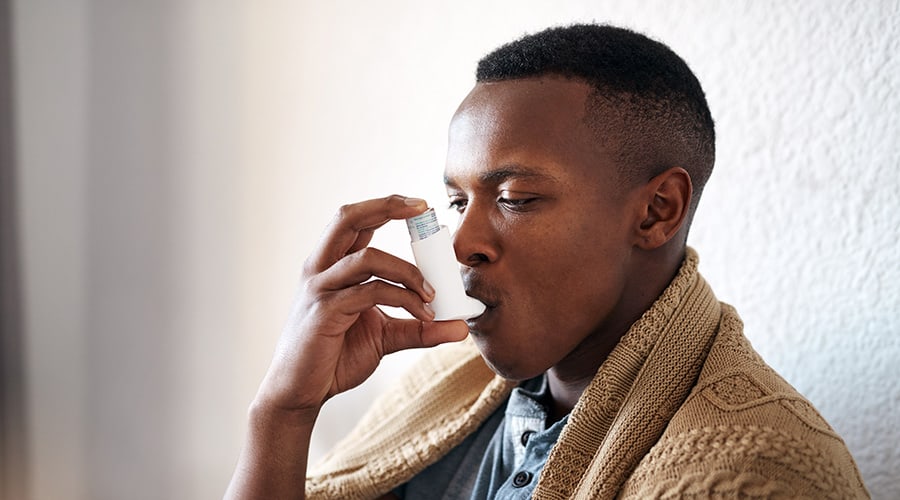Every healthcare professional, no matter where they work, should have a basic understanding of women’s health and the unique health problems that affect women as they age. Whether a nurse works specifically in women’s health, in an acute care hospital, or an outpatient clinic, they will interact with women in need of healthcare and guidance at some point in their career.
Recommended course: Nursing Care of the Postmenopausal Woman, 3rd Edition

Health difficulties in aging women
There are a few specific health difficulties that are especially common in women as they age. These challenges are often caused by hormones, anatomy, menopause, and social norms. According to the National Council on Aging, over 95% of the United States population over the age of 60 deals with at least one chronic health condition. The most common chronic conditions for adults over the age of 65 include:
- Hypertension
- Hypercholesterolemia
- Arthritis
- Coronary disease
- Diabetes
- Chronic kidney disease
- Heart failure
- Depression
- Dementia
- Chronic Obstructive Pulmonary Disease (COPD)
- Osteoporosis
Of these conditions, women are more likely to suffer from hypertension, arthritis, depression, dementia, asthma, and osteoporosis than men. Unfortunately, these diseases
Acute problems
Many of the acute health problems faced by aging women are a direct result of their chronic conditions. For example, the higher incidence of osteoporosis in women also leads to more bone fractures. A study published in PLoS One showed that over 65% of bone fractures occur in women. Some common acute health problems in women include:
- Bone fractures
- Sexually transmitted diseases
- Pneumonia
- Acute coronary syndrome
- Urinary tract infection
Acute Coronary Syndrome
Acute coronary syndrome is a problem with the coronary arteries that supply blood and oxygen to the heart tissue. This syndrome can include both stable and unstable angina and typically present with EKG changes and increased troponin levels. Since estrogen is protective against acute coronary syndrome, women have a lower risk of cardiovascular disease until after menopause, when their estrogen levels drop.
Acute coronary syndrome is often missed in the older population. Older adults, especially women, are more likely to exhibit lesser-known signs and symptoms of acute coronary syndrome than younger male patients.
Acute coronary syndrome in women often causes nausea, fatigue, and dizziness. In addition, up to 37% of women suffering from an acute myocardial infarction have no chest pain, making heart attack even more difficult to identify.
Sexual and reproductive women’s health
Menopause happens when a woman has gone 12 consecutive months without a menstrual cycle. On average, women experience menopause at the age of 51. Women going through menopause may experience hot flashes, sexual dysfunction, emotional lability, insomnia, headaches, weight gain, and hair loss.
Many of these problems will resolve over time as hormones adjust, and symptoms can sometimes be managed by maintaining a healthy diet, getting enough sleep, and exercising regularly. For women with severe symptoms, hormone therapy is an option.
Sexual and reproductive health in the older population cannot be ignored. Older men and women can still have fulfilling sexual relationships, and issues like sexual dysfunction and sexually transmitted infection need to be addressed in the older population.
Many women struggle with depression and loneliness as they go through menopause. Changing hormones, feelings of loss, decreased sex drive, and weight gain can all contribute to a woman’s feeling of sadness through menopause. Healthcare providers can help their patients navigate these feelings by asking open ended questions about sexual and emotional health while offering support and resources.
Women’s health screening tests
Providers in all settings should be aware of and recommend scheduled screening tests for their aging patients. These tests can uncover dangerous conditions in their early stages and allow patients and their providers to prevent worsening disease.
Important screening tests include:
- Blood pressure measurements: Annually
- Lipid profile measurements: Annually
- Sexually transmitted infection: Annually or with changes in sexual partners
- Blood sugar measurements: Annually
- Bone density screening: After age 65
- Mammogram: Every two years starting at age 50
- Pap smear: Every three years between the ages of 20 and 65
- Colonoscopy: Every 5-10 years after age 50
Prevention and treatment
Maintaining a healthy lifestyle by consuming a balanced diet, exercising regularly, and getting enough sleep. Many women also benefit from using calcium, vitamin D, and iron supplements to prevent common conditions like anemia and osteoporosis.
Women can also benefit greatly from adding weight bearing exercises to their routine, adding iron rich foods like spinach to their diets, getting enough sunlight, and quitting smoking.
Providing quality healthcare to older women
Beyond maintaining a healthy lifestyle, healthcare providers should encourage older women to take a few additional steps to protect their health. While annual check-ups are a great opportunity for nurses and other caregivers to discuss prevention and treatment strategies, these topics can and should be discussed at any outpatient or inpatient appointments.
- Review medication lists for potential dangers resulting from polypharmacy
- Recommend following the recommended screening schedule for chronic diseases
- Conduct a thorough sexual health screening
- Maintain open communication regarding mental, social, emotional, and spiritual health
- Encourage social connections and support groups
- Educate patients about risk factors for disease such as smoking, unsafe sexual behaviors, sedentary lifestyle, and isolation
Recommended course: Care Settings for Older Adults
In addition, all caregivers should watch closely for any signs of elder abuse and neglect. Signs of elder abuse might include:
- Unexplained bruises, cuts, or scrapes
- Unexplained vaginal or anal bleeding
- Changes in demeanor such as becoming shyer or withdrawn
- New inability to cover medical expenses
- Nutritional deficiencies or complaints of hunger and missed meals
- Lack of basic hygiene
- Unreasonable fear or suspicion of caregivers
- Unexplained weight loss
- Severe dehydration
Nurses who suspect elder abuse should report their concerns to their leaders or to the National Adult Protective Services Association.






